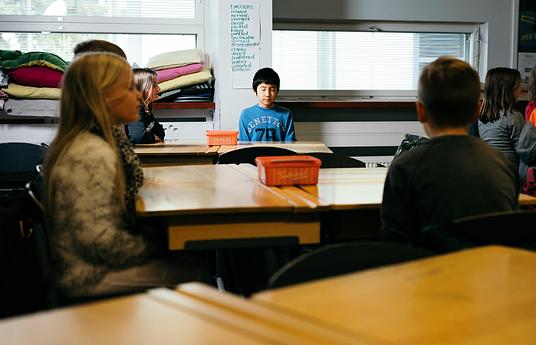As frontline educators, teachers often face a multitude of teaching pressures and student behavior challenges, leading to increased emotional stress. This is also one of the issues addressed by the quality education goal advocated in the SDGs.
Our emotion training program utilizes OK FACE cards and Emo-baby to aid teachers and students in identifying, expressing, and managing emotions effectively.
Teachers can learn how to express and process their emotions through Virginia Satir's 6A self-awareness training. This intervention has been shown to be effective through research and evidence. Even though technology can't fully represent student emotions, we can still provide feedback on their emotional expression through a variety of methods.
By guiding teachers through a process of self-awareness, they can gain a better understanding of their own emotional state, manage their emotions appropriately, and thus become more attuned to the emotional fluctuations and needs of their students, providing them with positive support and responses.
Teacher Feedback:
1. Improved emotional observation (89%).
2. Enhanced confidence in handling emotions (82.5%).
3. Better self-awareness and regulation (88%).
4. Students improved empathy (87%).
Student Feedback:
1. Increased emotional understanding (85%).
2. Positive classroom atmosphere (86%).
Primary Marketing Strategies:
1.Teacher Training Workshops: Train OK FACE Emotions Educators to help teachers develop self-awareness of their own emotions, enabling them to better manage their emotions and create a positive learning environment in the classroom.
2.Develop Specialized OK FACE Emotions-Themed Courses for Children: Teach children how to effectively express their emotions through dedicated courses designed specifically for them.
3.Word-of-Mouth Marketing (Teacher and Parent Referrals): Leverage the power of word-of-mouth recommendations by utilizing existing students and teachers as advocates. According to current statistics, approximately 45% of new students and teachers are referred by existing ones
We’ve realized — emotional education in schools just isn’t enough.
Because at the heart of a child’s growth is the home —
and the people they love most: their family.
But the truth is,
many parents, under stress and shaped by traditional beliefs,
often react from a place of emotional pain.
And when that happens,
it becomes hard for children to truly learn or feel safe enough to grow.
So we created Abode of the Heart —
a set of emotional cards for adults.
We hope both generations can learn, have fun, and grow together.
Because when each of us makes just a little progress every day,
we strengthen the bonds at home,
and help shape a society that’s more understanding,
more compassionate,
and more whole.
We truly believe —
this is a journey for all of us.
And we can’t wait to see adults and children
learning, healing, and growing together.
Teachers can easily learn emotional education methods through simple training. Detailed explanations during the training ensure proficiency in mastering the OK FACE system's steps. Interested educators can contact us at goodcoding4u@gmail.com for in-depth course content and training arrangements.



